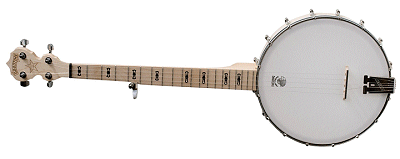

|

In this Issue - September, 2015I love music and connecting with people through music. I also love helping other folks (usually younger folks) learn more about music and more about how to reach people through music. That's the main reason my "CreekDontRise.com" site and related sites keep growing. When two or three folks ask me the same question, I realize there's a need for that kind of information on the internet, so I do research and write articles.That's one reason I keep writing about banjos; some important topics don't seem to ever get covered or discussed online, and others are discussed so much that there is more misinformation out there than information. I also write songs, play guitar and several other instruments, and occasionally perform "out." So there's a lot more I could be writing about. But for some reason the internet doesn't have quite as high a ratio of misinformation to information about those topics as it does about banjos. So this month's articles will include two more about banjos. If you're not a banjo player, my apologies. In the last few weeks, I've spent a little time experimenting with some of the so-called "social" platforms that up-and-comers today are using to get and keep relationships with fans. But I haven't become an expert on anything but goofing up yet. Those experiences tend to get buried in the CreekDontRise.com career forums discussed below. That said, I HAVE met dozens of independent artists with real talent and several industry pros who are nice, helpful people (believe it or not). And I've gotten some ideas for using my current platforms to "spread the word" about my music projects. When I get around to finishing them, of course. Speaking of my CreekDontRise.com platform, you may notice that I'm still posting the vast majority of content on the "discussion forums" there. But many topics have had hundreds of "hits," and several have had well over a thousand. (No, it's not all "robots," I know how to account for that.) So folks are finding their way there and, apparently, finding the resources helpful. Please register and contribute if you can - I'm not always right, and I don't know everything. (Can you tell I'm married?) I've also encountered a ton of people who are into Folk Revival and vintage Jesus Music (two kinds of music I was into back when they were new and fresh). So I find it encouraging that so much music that hasn't been heard in the radio in forty or fifty years still has such a strong following. Makes me want to reintroduce some Peter, Paul, and Mary or Larry Norman into my next set. Acoustic and roots-based music are alive and well, and we're going to keep doing what we can to keep them that way. Our hopes for next year include getting more of my music projects complete, as well as expanding our music instrument instruction resources. In the meantime, keep playing, keep singing, and keep sharing! This issue's articles are:
In our effort to find a banjo that would be especially easy to take places, we came across the Deering Parlor banjo (shown above right), and a few imitators. The Deering does sound good - in fact I'd dare you to distinguish between the sound of the Deering Parlor banjo and the standard Deering Goodtime banjo that it is based on. Lots of full-length backless banjos are called "starter" or "student" or "travel" banjos just because they're cheap. The Deering Parlor banjo and its imitators come a lot closer to deserving those titles, because they average 4" shorter than standard 5-strings, making them easier to squeeze into small spaces and easier for small fry to play. Our RiverboatMusic.com review profiles only three of these, because not many are made (yet) that are worth getting out of the box. In fact, the best one we review is almost impossible to find anyway. But if you've ever wondered what was available along this line, this will give you some idea. To jump to the article, please click the following link.
If you're used to hearing 5-string banjo players argue over which playing style is more authentic, you might be surprised to know that two of the most popular styles of a century ago are barely played today. When the banjo was at its peak of popularity between 1880 and 1910, most people north of the Mason Dixon line (and many folks south of it) played banjo using a technique based on classical guitar picking techniques. In fact this technique was so ubiquitous that when it started to fade, the banjo experts called it "classic banjo," the same way we might apply terms like "classic rock." Meaning that it ruled for a while, but is no longer current. Like "classic rock" the term does NOT refer to classical music. A few classical and Tin Pan Alley pieces WERE transcribed for this style of play, but most of the music people played this way was written specifically for banjo. And in those pre-radio days, families "ate it up." Fire departments, private girl's schools, and many other organizations formed "banjo bands" just for the enjoyment of playing this kind of music together.
| |
|
All material, illustrations, and content of this web site is copyrighted ? 2001, 2002, 2003, 2004, 2005, 2006, 2007, 2008, 2009, 2010, 2011, 2012, 2013, 2014, 2015 by Paul D. Race. All rights reserved.
For questions, comments, suggestions, trouble reports, etc. about this play or about this web page, please contact us. |
| Visit our other music pages: | |||||

|
 |
 |

|

|

|

|

|

|

|

|

|

|

|

|

|

|

|

 Alternative 5-String Styles
Alternative 5-String Styles


